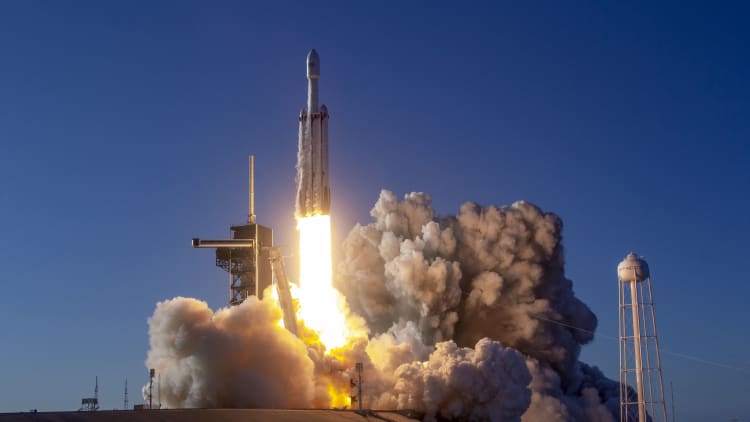
SpaceX caught the half of the fairing, or nose cone, of its Falcon Heavy rocket on Tuesday, passing another milestone as the company seeks to consistently reuse an expensive part of its rocket.
Stationed in the Atlantic Ocean, high speed boat "Ms. Tree" caught the fairing half in a net strung up above the boat's deck, CEO Elon Musk confirmed in a tweet. The fairing is the bulbous nose cone on top of the rocket.
SpaceX has attempted to catch the fairing multiple times before. With its boat previously stationed in the Pacific Ocean, the company has been trying to land the fairing in the net since 2017. The boat had several near misses, with Musk noting on a previous attempt that SpaceX missed catching the fairing by only "a few hundred meters."

In a December 2018 video, SpaceX showed what the fairing-catching boat looked like and explained its purpose.
The fairing halves each have a set of guidance systems and parachutes, as they re-enter the Earth's atmosphere at multiple times the speed of sound. Even though this is the first time the boat caught a fairing half, SpaceX has been able to fish the fairings out of the water on close misses.
Reusing the fairings on future launches is key to SpaceX's cost saving goals. Fairings represent about 10% of the cost of a rocket, the company has said. With a Falcon 9 rocket coming with a price tag starting at $62 million, that means fairings cost about $6 million. Additionally, as SpaceX aims to make rocket launches more akin to air travel – where complex machines are consistently reused with minor maintenance between flights – the company aims to recover every part of its rockets in the future.


